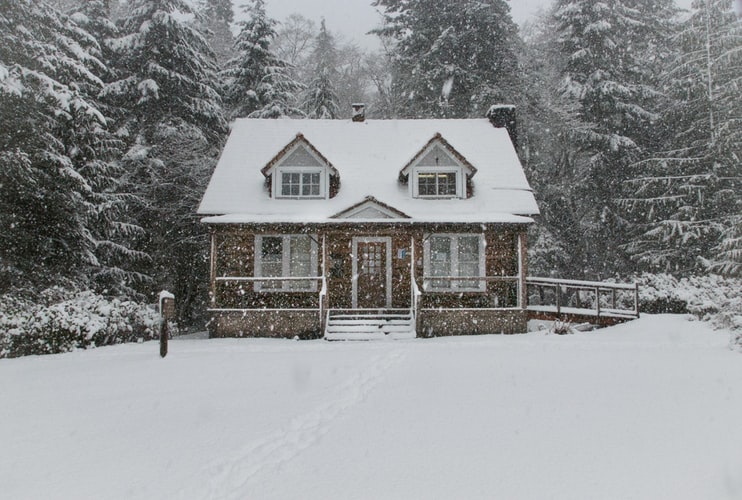
Winter Home Maintenance Tips for Midwesterners
If you live in the midwest, you probably already know that winters can be harsh. Earlier this year, many midwestern states experienced a “polar vortex,” where windchill temperatures dropped to -60 degrees.
Even during more “normal” years, midwest winters are nothing to take lightly. The temperatures are cold, there’s a lot of snow, ice, and wind, and it often feels like it lasts forever. Before those extreme conditions hit this year (and every year), it’s important to use some general maintenance tips to keep your home and family safe this winter. You already prepared your car with things like snow tires, so why not focus on prepping your home, too?
Year-round maintenance is essential for midwesterners in a colder climate. If you don’t stay ahead of home maintenance, you could end up having frozen pipes, roof damage, or trouble with your insulation designed to keep your family warm.
So, if you’re a tough-as-nails midwesterner, let’s take a look at a few different tips you can use to prepare your house for the upcoming winter months.
Keeping Your Pipes Flowing Freely
There’s nothing worse than waking up one snowy winter morning, turning on your faucet to take a shower, and realizing no water is coming out. No water for brushing teeth, making coffee, or doing dishes or laundry. Obviously, a lack of water in a house becomes a big problem very quickly.
When the temperatures get extremely cold, it doesn’t take much for pipes in a home to freeze — especially if the home is older.
The first step in keeping your pipes from freezing is to find out where they are. If you’re not sure, an industrial metal detector can often help you find them. Once you have, you can check to see what condition they’re in. Pipes that have leaks or look worn or rusty in some spots may need to be replaced. Instead of trying to do that yourself, it’s typically a good idea to call an experienced plumber for sewer line repair or replacement.
If your pipes look like they’re in good shape, something as simple as leaving a faucet in your house on a drip can prevent them from freezing. If your pipes are exposed outside, covering them with a blanket or towel can help to keep them from freezing. You should also keep your thermostat at the same temperature, day and night. Outdoor temperatures tend to get colder at night, which is often when pipes freeze. By keeping your home warm all night, it’s less likely that they’ll have a chance to freeze over.
Avoiding Structural Damage
When it comes to a midwestern winter, you know we’re not talking inches of snow — we’re talking feet!
Snow and ice can also be extremely heavy, and if the structure of your home is already weak, it won’t take much of the white stuff to cause damage to your roof or walls. So, how can you make sure that doesn’t happen?
First, look for signs of stress around your home. This includes cracks in walls, bowing, or shifting. A quick inspection can let you know if something looks weak or dangerous. If it does, it’s important to call an experienced contractor right away to fix the issues before the snow starts to fall.
You can “DIY” some structural issues yourself, too. Applying caulk around windows and anywhere else there may be air leaks is a great way to prevent wind, snow, and ice from getting in and making a mess — especially around windows. You can also seal minor cracks on the outside of your house for the same purpose.
Finally, trim back any trees that are close to the house. Remember, snow is heavy! If it piles up on tree branches, it’s easy for those branches to snap and fall off. If they’re directly above your house, that could cause a lot of roof damage, and no one wants a giant hole in their house in the middle of winter!
Being Proactive This Winter
Preparing your home should be something you do inside and out before cold weather hits. That means more than just checking your pipes and the structure of your home, it means being prepared for any extreme winter situations.
So, in addition to maintaining your home, make sure you’re prepared with things like a first aid kit, a radio, and extra food and water in the house. It’s also a good idea to have a generator you can hook up. Snowstorms can make it difficult to go anywhere and can knock out power for days. No power often means no heat for many people, which is nearly impossible to live with when the temperatures dip below freezing.
By taking active steps to make sure your home is ready for winter, you can keep yourself and your family safe, warm, and dry all winter long.




